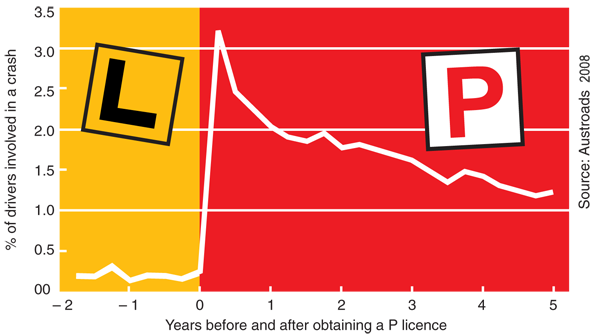
Austroads (2008), The Crash and Offence Experience of Newly Licensed Young Drivers, Sydney, AP-R331/08
While South Australia’s road toll has decreased over the past decade, young drivers are still over-represented in road crashes, much more so than older age groups.
Young drivers are at greatest risk of being involved in a crash in their first year of driving unsupervised when they are on their P-Plates. Lack of experience, night-time driving and the presence of peer-aged passengers all contribute to an increased crash risk for young drivers.
The fact is young drivers need significant on-road driving experience before their crash risk decreases. The new rules, like restricting late-night driving and peer-aged passengers until young drivers gain more driving experience will save lives.
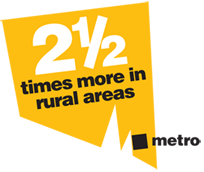 Young drivers and riders aged 16-24 in rural South Australia are 2 ½ times more likely to die or be seriously injured in a crash than those who live in the metro area.
Young drivers and riders aged 16-24 in rural South Australia are 2 ½ times more likely to die or be seriously injured in a crash than those who live in the metro area.
Young people aged 16-19 are dying on South Australian roads at a greater rate than in Victoria, New South Wales, Queensland, Western Australia, Tasmania and Australian Capital Territory. Many of the other states have passenger and night-time driving restrictions.
If passenger and night-time restrictions were in place since 2008 this could have prevented:
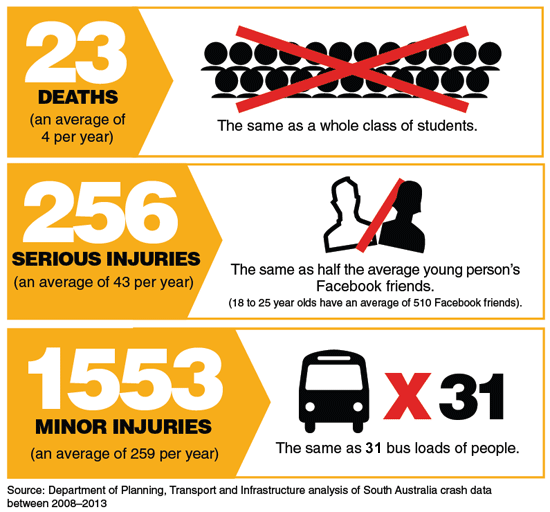
Young drivers are four to five times more likely to be involved in a fatal crash when they have two or more peer-aged passengers. Carrying peer-aged passengers can distract a driver and also encourage a young driver to take greater risks.
The figure below shows the drivers involved in fatal crashes with 2 or more passengers in the vehicle as a percentage of all drivers involved in fatal crashes in each age group.

Of the 16-19 year old drivers involved in fatal crashes, 25% were carrying two or more passengers at the time of the crash. This compares to 12% of drivers involved in fatal crashes aged 25 or over.
All drivers have an increased risk of crashing when driving late at night but the risk is greater for young, inexperienced drivers. Inexperience in night driving as well as fatigue and risk taking are all contributing factors.
The figure below shows the drivers and riders involved in fatal crashes between 10pm and 5am as a percentage of all drivers and riders involved in fatal crashes in each age group.
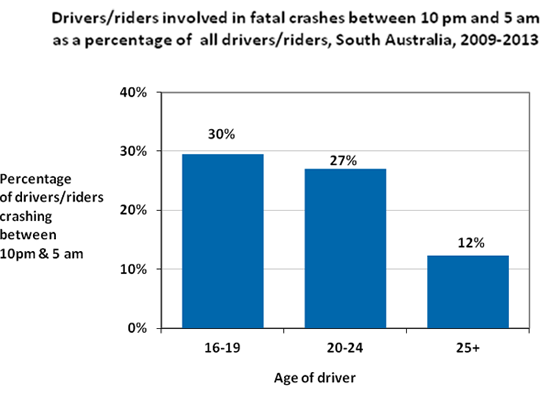
Of the 16-19 year old drivers/riders involved in fatal crashes, 30% crashes between the hours of 10pm and 5am. This compares to 12% of drivers/riders involved in fatal crashes aged 25 or over.
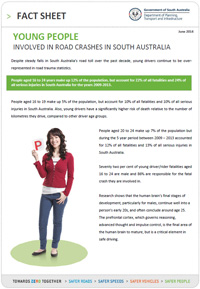
For more information read our Fact Sheet on Young People Involved in Crashes in South Australia.